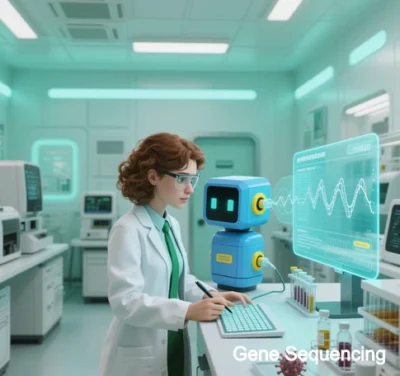
Gene Sequencing: Decoding the Blueprint of Life
What is Gene Sequencing?
Gene sequencing is the process of determining the precise order of nucleotide bases—adenine (A), thymine (T), cytosine (C), and guanine (G)—within a DNA molecule. This sequence dictates genetic information and functionality, enabling scientists to decode gene structures, functions, and potential mutations.
Core Significance of Gene Sequencing
- Deciphering Life’s Code:
DNA serves as the genetic blueprint of life. Sequencing “reads” this blueprint, revealing hereditary traits, disease risks, evolutionary relationships, and more. - Foundation of Precision Medicine:
Identifies mutations (e.g., cancer drivers, hereditary variants) to guide personalized treatments, targeted drug development, and early disease diagnosis. - Tool for Biological Research:
Advances understanding of gene function, species evolution, and ecosystem interactions across microbes, plants, animals, and humans.
Key Technologies in Gene Sequencing
1. First-Generation Sequencing (Sanger Sequencing)
- Principle: Chain-termination method using ddNTPs to halt DNA strand elongation.
- Features: High accuracy (>99.99%) but low throughput and high cost; ideal for small-scale or validation sequencing.
2. Next-Generation Sequencing (NGS)
- Principle: Massively parallel sequencing of fragmented DNA (e.g., Illumina’s sequencing-by-synthesis).
- Features: High-throughput (billions of reads per run), cost-effective; used for whole-genome, exome, or transcriptome analysis.
3. Third-Generation Sequencing (Single-Molecule Sequencing)
- Principle: Direct sequencing of single DNA molecules (e.g., PacBio’s long-read tech, Oxford Nanopore).
- Features: Ultra-long reads (millions of bases), detects epigenetic modifications (e.g., methylation); ideal for complex genome assembly and structural variant analysis.
Applications of Gene Sequencing
| Field | Examples |
|---|---|
| Medicine | Cancer genomics, newborn genetic screening, pathogen identification (e.g., SARS-CoV-2 tracing) |
| Agriculture | Crop disease-resistance gene selection, livestock breeding optimization |
| Forensics | DNA profiling, paternity testing |
| Ecology | Biodiversity studies, conservation genetics for endangered species |
| Synthetic Biology | Engineered gene circuits, microbial strain optimization |
Gene Sequencing Workflow
- Sample Preparation: Extract DNA/RNA (reverse-transcribed to cDNA if needed).
- Library Construction: Fragment DNA and attach adapters for sequencing.
- Sequencing Reaction: Base detection via platform-specific methods (e.g., optical signals, nanopore currents).
- Data Analysis: Align reads to reference genomes, identify variants (SNPs, indels), and annotate functional impacts.
Future Trends
- Ultra-Fast Sequencing: Portable nanopore devices enable real-time pathogen detection in field settings.
- Multi-Omics Integration: Combine genomic, epigenomic, and proteomic data for holistic biological insights.
- Cost Reduction: Whole-genome sequencing costs have plummeted from $3 billion (2003) to under $1,000, democratizing access.
Conclusion
Gene sequencing is not only a cornerstone of modern biology but also a transformative force in medicine, agriculture, and conservation. From unraveling the human genome to combating global pandemics, it continues to expand humanity’s understanding of life’s complexities.
Data sourced from publicly available references. For inquiries, contact: chuanchuan810@gmail.com.






